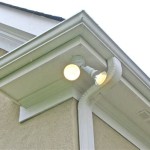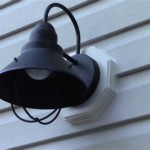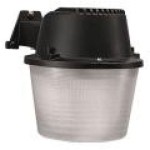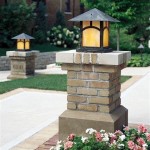Best Finish for Outdoor Wood Table
Outdoor wood furniture adds beauty and functionality to any patio or garden. However, exposure to the elements can take a toll on wood, causing it to fade, crack, and rot. Applying a protective finish is crucial for preserving the wood's integrity and extending its lifespan. Choosing the best finish depends on several factors, including the type of wood, the climate, and the desired aesthetic.
Various finishes offer different levels of protection and durability. Understanding the characteristics of each type can help individuals select the most suitable option for their outdoor wood table. These finishes can be broadly categorized into penetrating oils, surface sealers, and exterior paints.
Penetrating oils, like linseed oil, tung oil, and Danish oil, soak into the wood pores, nourishing the wood from within. They offer excellent water resistance and enhance the natural beauty of the wood grain. However, they typically require more frequent reapplication compared to other finishes, especially in harsh climates. They also offer less protection against scratches and abrasion.
Surface sealers, such as varnish, lacquer, and polyurethane, form a protective layer on top of the wood. They provide excellent protection against moisture, UV rays, and scratches. Varnish is known for its durability and water resistance, making it a popular choice for marine applications. Lacquer dries quickly and provides a smooth, hard finish, while polyurethane offers excellent abrasion resistance. Surface sealers require less frequent reapplication compared to penetrating oils.
Exterior paints offer the highest level of protection against the elements. They come in a wide range of colors and can completely transform the look of a wood table. Paint provides excellent UV protection, preventing the wood from fading. It also forms a barrier against moisture and insects. However, paint can obscure the natural beauty of the wood grain.
When selecting a finish, the type of wood is a significant consideration. Hardwoods, like teak and cedar, are naturally more resistant to decay and insects than softwoods, like pine and fir. Hardwoods typically require less protection and can benefit from penetrating oils that enhance their natural beauty. Softwoods, on the other hand, benefit from more robust protection offered by surface sealers or paint.
The local climate also plays a crucial role in determining the best finish. Areas with high humidity and rainfall require finishes with excellent water resistance, such as varnish or paint. Regions with intense sunlight require finishes with strong UV protection to prevent fading. For areas with extreme temperature fluctuations, finishes that offer flexibility and prevent cracking are essential.
The desired aesthetic is another important consideration. For those who appreciate the natural look and feel of wood, penetrating oils are an excellent choice. They enhance the wood's natural color and grain, providing a warm and inviting appearance. Surface sealers can also enhance the wood's natural beauty while providing a more durable finish. Paint allows for complete customization of the table's appearance, allowing individuals to match it to their existing outdoor decor.
Proper surface preparation is crucial for achieving a smooth and durable finish. Before applying any finish, the wood surface should be cleaned thoroughly to remove dirt, dust, and any previous finishes. Sanding the wood creates a smooth surface that allows the finish to adhere properly. Filling any cracks or holes with wood filler ensures a uniform finish.
Applying the finish according to the manufacturer's instructions is essential for optimal performance. Most finishes require multiple coats, allowing each coat to dry completely before applying the next. Thin coats are generally recommended to prevent drips and runs. Using a high-quality brush or sprayer ensures even application and minimizes brush marks.
Regular maintenance is key to prolonging the life of the finish and protecting the wood. Cleaning the table regularly with a mild soap and water solution removes dirt and grime. Reapplying the finish periodically, as needed, helps maintain its protective properties and prevents the wood from weathering. Storing the table in a covered area during the off-season or covering it with a waterproof tarp can further extend its lifespan.
Choosing the best finish for an outdoor wood table requires careful consideration of several factors. By understanding the different types of finishes available and considering the specific needs of the table and its environment, individuals can ensure their outdoor furniture remains beautiful and functional for years to come.

What S The Best Outdoor Finish Wood

The Best Finishes For Outdoor Wooden Furniture

How To Treat Wood For Outdoor Use 3 Methods Explained

How To Protect Outdoor Wood Furniture Osmo

How To Choose The Best Finish For Outdoor Projects

How To Re And Protect Outdoor Wood Furniture Love Grows Wild

How To Find The Best Wood Varnish Saltwoods Handmade Tables

How To Treat Wood For Outdoor Use 3 Methods Explained

Spalted Maple Best Finish Outdoor Bar Woodworker S Journal

How To Finish Wood Furniture For Outdoor Use
Related Posts







